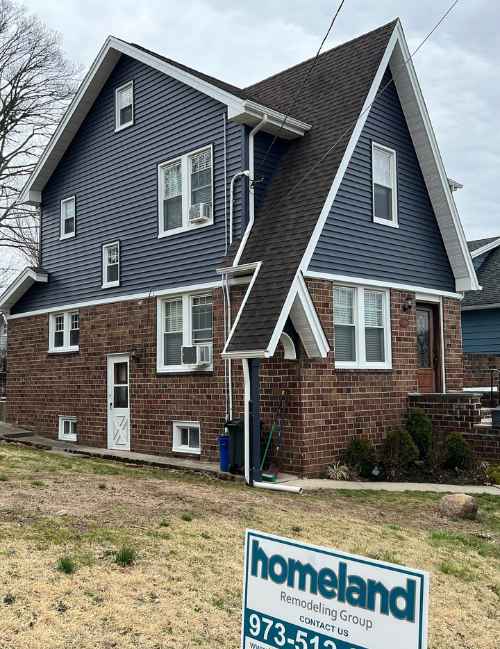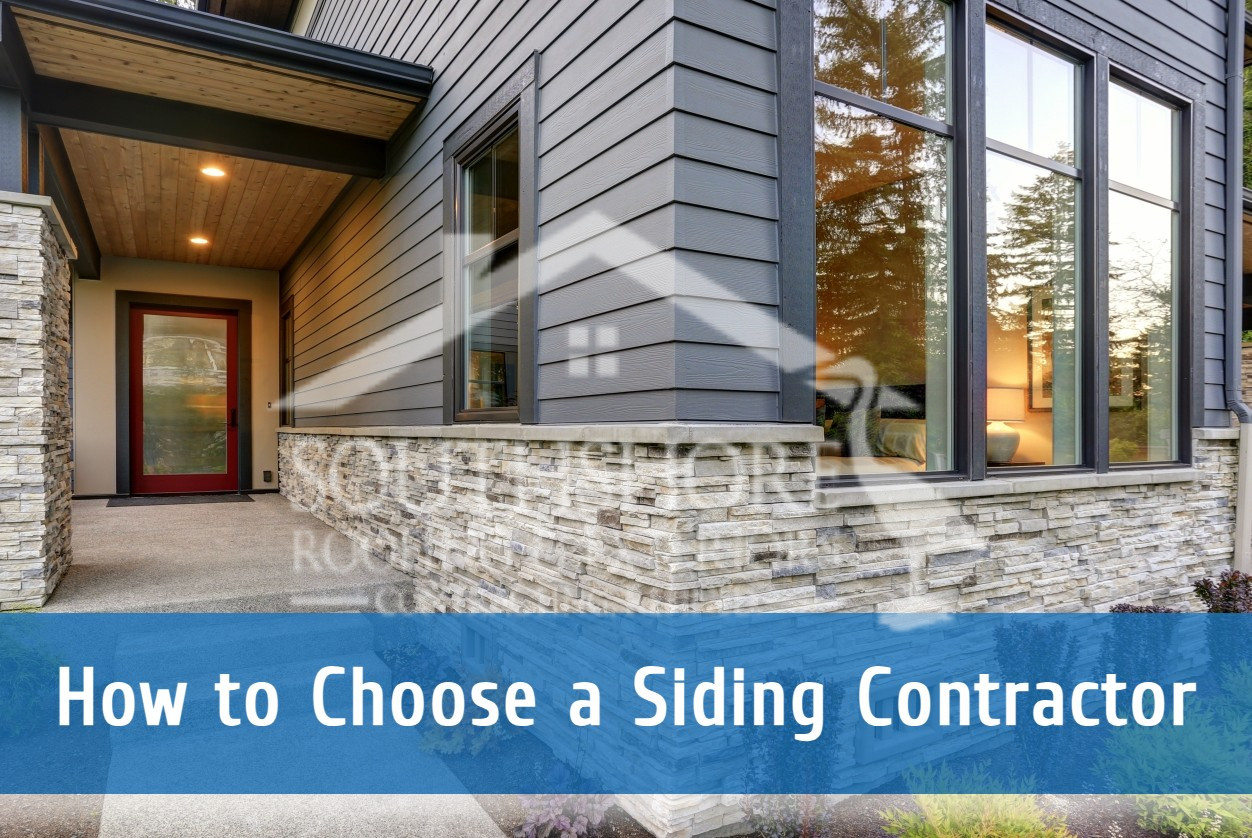The Necessary Guide to the Different Kinds Of Home Siding and Their Unique Benefits
In the realm of home improvement, selecting the best siding is a vital decision that affects both visual appeal and practical performance. The selection of materials offered, such as timber, plastic, fiber steel, concrete, and block, each deal distinct advantages that provide to different needs and preferences. Understanding these differences can significantly enhance the long life and worth of a residential property - morris siding contractor. However, with a lot of alternatives to consider, which exterior siding material genuinely sticks out for your specific project? Checking out these options can result in notified decisions that straighten with both style and practicality.
Timber House Siding
Timber home siding, a prominent choice for residential outsides, offers a classic visual that integrates natural elegance with architectural integrity. This exterior siding material is readily available in numerous styles, consisting of clapboard, roof shingles, and board-and-batten, allowing homeowners to customize their appearance to match their style choices. Wood home siding is usually crafted from durable species such as cedar, redwood, or ache, which are understood for their resilience and capability to stand up to environmental stress factors.
One of the key benefits of timber house siding is its superb insulation properties, which can add to energy effectiveness and lower heating costs. In addition, wood house siding is biodegradable, making it an eco friendly choice when sourced sustainably. Regular upkeep, including painting or discoloration, can prolong its life expectancy and boost its look, allowing home owners to preserve the all-natural beauty of the wood.
Nonetheless, prospective downsides include vulnerability to parasites, rot, and weather damage, demanding adequate therapy and maintenance - morris siding contractor. In spite of these worries, when properly taken care of, timber home siding can offer a long lasting and attractive solution that improves the character of a home while supplying a warm, welcoming ambience

Plastic House Siding
Vinyl exterior siding has actually become a leading choice for home owners looking for a low-maintenance exterior option that incorporates toughness and cost. This flexible material is crafted from polyvinyl chloride (PVC), making it immune to different weather, consisting of moisture and UV rays. Therefore, vinyl home siding does not warp, rot, or discolor, ensuring resilient aesthetic charm.
Among the primary benefits of plastic siding is its extensive variety of colors and designs, permitting homeowners to attain the desired seek their home without the demand for frequent repainting. Additionally, plastic house siding is very easy to set up, which can considerably minimize labor prices during building or restoration tasks.
Vinyl house siding also contributes to energy effectiveness. Several options feature insulation backing, which boosts thermal efficiency, aiding to maintain comfortable indoor temperatures and possibly lowering energy expenses. Moreover, its smooth surface area promotes very easy cleansing, needing just regular cleaning with a yard pipe to get rid of dust and particles.
Fiber Concrete Home Siding
Fiber concrete home siding has actually acquired traction amongst contractors and property owners alike as a result of its impressive mix of longevity and visual adaptability. Composed of a mixture of cellulose, sand, and concrete fibers, this siding choice is engineered to endure extreme weather condition conditions, including high winds, hefty rain, and temperature level changes, making it a durable selection for domestic outsides.

Among the key benefits of fiber concrete house siding is its resistance to insects, such as termites, and its non-combustible nature, offering boosted fire safety. morris siding contractor. Additionally, it is readily available in a vast array of colors, appearances, and designs, enabling homeowners to achieve their preferred aesthetic without compromising performance
One more advantage is its low maintenance requirements; fiber concrete exterior siding normally calls for paint or staining every 5-10 years, which is much less regular than other products. Furthermore, its durability adds to a reduced overall cost of ownership, as it minimizes the demand for frequent repair work or replacements.
Eventually, fiber cement house siding stands for an excellent investment for those seeking a resilient, eye-catching, and versatile exterior option, combining both form and function to browse around these guys enhance the home's curb allure.
Steel House Siding
The attraction of steel home siding exists in its durable longevity and modern-day visual charm, making it a preferred selection for modern style. Available in materials such as aluminum and steel, steel house siding supplies a series of coatings and shades, enabling house owners to achieve a customized look that enhances their layout vision.

Energy effectiveness is one more considerable advantage, as many metal siding products are designed with insulation options that help regulate interior temperature read this article levels. This can lead to reduced energy costs over time. In addition, steel house siding is often recyclable, making it an eco friendly option for sustainability-minded property owners.
The setup process for metal house siding can be reasonably uncomplicated, causing a quicker turn-around time for building jobs. Overall, steel house siding incorporates performance and style, making it a practical alternative for those looking for a aesthetically attractive and enduring outside surface.
Brick and Rock Home Siding
Brick and rock exterior siding stands apart as a classic selection that boosts the aesthetic beauty of any type of home. Known for their durability and reduced maintenance, these products offer an outstanding roi while boosting the residential property's curb allure. Offered in numerous shades, appearances, and patterns, block and rock can be tailored to match diverse architectural styles, from standard to modern.
Among the main benefits of brick and stone home siding is their power efficiency. Both materials possess all-natural insulating buildings that help regulate indoor temperature levels, possibly lowering heating and air conditioning costs. Additionally, they supply remarkable fire resistance contrasted to other home siding options, adding to boosted safety and security.
Another benefit is their durability. Brick and stone can last for decades, typically calling visit this site right here for marginal maintenance past periodic cleansing. Unlike timber house siding, they are unsusceptible pests and rot, guaranteeing a lasting exterior that endures the components.
Verdict
In summary, the choice of house siding considerably affects a home's visual charm, energy efficiency, and maintenance demands. Each kind of exterior siding-- whether timber, plastic, fiber steel, block, or concrete and stone-- offers one-of-a-kind advantages tailored to various home owner preferences and ecological conditions.
One of the primary benefits of timber home siding is its excellent insulation residential or commercial properties, which can add to energy effectiveness and reduced heating expenses. In addition, wood home siding is naturally degradable, making it an environmentally friendly choice when sourced sustainably.One of the key benefits of metal house siding is its resistance to various environmental aspects.Energy effectiveness is one more substantial advantage, as lots of steel siding products are developed with insulation options that assist manage interior temperatures. Each type of exterior siding-- whether timber, plastic, fiber metal, cement, or block and stone-- uses unique benefits tailored to different home owner choices and ecological problems.